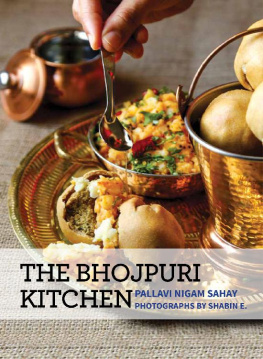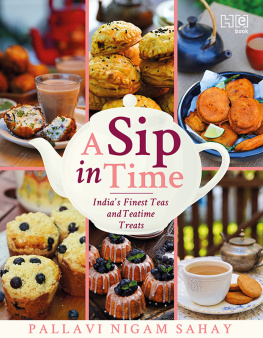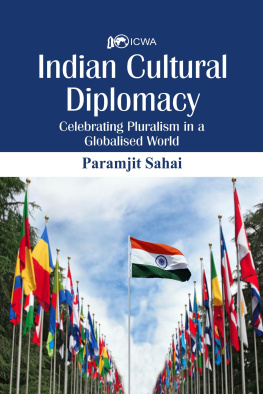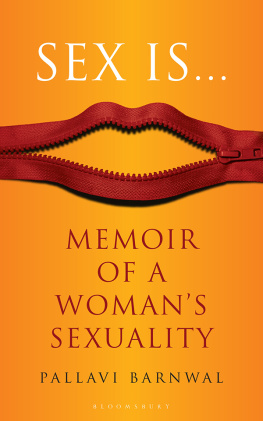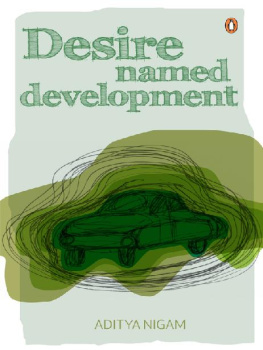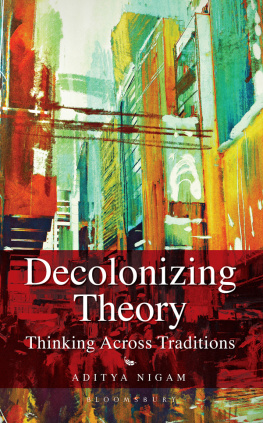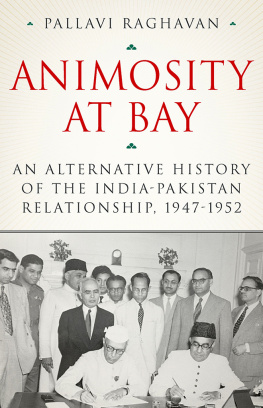westland publications ltd
61, II Floor, Silverline Building, Alapakkam Main Road, Maduravoyal, Chennai 600 095
93, I Floor, Sham Lal Road, Daryaganj, New Delhi 110 002
First published by westland publications ltd, 2017
Copyright Pallavi Nigam Sahay, 2017
Inside photographs copyright Shabin E., 2017
All rights reserved
ISBN: 9789386850058
Design: www.seemasethidesign.com
This book is sold subject to the condition that it shall not by way of trade or otherwise, be lent, resold, hired out, circulated, and no reproduction in any form, in whole or in part (except for brief quotations in critical articles or reviews) may be made without written permission of the publishers.
I would like to dedicate this book to my parents, Ashok & Deepa Nigam, and to my sister, Sushmita, who always encouraged me to follow my passion...
CONTENTS
ACKNOWLEDGEMENTS
To my mother-in-law, Jyotsna Sahay and the team at Westland. Special thanks to Sherna Wadia and Sudha Sadhanand for their tremendous support in fine-tuning this book. Also, a special thank you to my agent, Sherna Khambatta for believing in my work.
INTRODUCTION
Masala tel choddhne tak bhunjna, dulhin, (Saute the masala till you see the oil at the edges of the pan).
This was my grandmother-in-laws advice on the day of my chulha chulai , my very first day in a Bhojpuri kitchen. My mother-in-law had told me about a Bihari tradition where a bride cooks her first traditional three-course meal for the entire family. It was on that day that my romance with Bihari khana began.
My curiosity about Bihari cuisine however began a few days earlier on my kacchi (a ceremony performed on the day after the wedding, where certain traditional Bihari dishes are prepared and served to the bridegrooms party). I was absolutely fascinated that day by the delicious Baingan Badi ki Sabji (Aubergine Curry with Black Gram Cakes; ). Since then, I have been on an unending saga of loving and learning Bihari food. This book is about my beautiful journey across various Bhojpuri bhansa ghars (kitchens).
I belong to Bhopal in Madhya Pradesh and after marrying Kunal, who is from Bihar, I knew that there would be plenty to learn, especially the states culture and traditions. But what I had not imagined was Bihars vast culinary world, which has so much to offer.
Biharis love their food. Take any festival Holi, Diwali, Dussehra or Chhath (see, The Festivals of Bihar; ) and its more a celebration of food and serving different dishes than anything else. In fact, Biharis even change their wedding dates to complement their appetites. I have never been to a family wedding on a Tuesday or Thursday, the two days when the majority abstain from eating non-vegetarian food. No wonder then that one of their ex-CMs was called Rabri, and many kids in the state still respond to a sweet name Laddoo!
I am a major in Economics and was working with an insurance company when I got married. At that time, it seemed like a natural career path, because everyone around me, my husband, father, father-in-law and sister worked in the financial sector. But somehow, my work gave me neither happiness nor satisfaction.
My husband would often remark in a typical Bollywood fashion, Tumhari zindagi mein koi lakshya nahi hai ! (You dont have an aim in life!) I agreed. The passion was missing. I wasnt the type to toss up data, mix up numbers and cook up theories. Since childhood, Id a passion for food and cooking scrumptious meals, especially the appreciation that followed. The more I worked, the more I realized this. So one fine morning, in a serendipitous moment, I quit. And then, everything fell right into place.
After quitting my job, I decided to give my passion for cooking a professional shot and became a chef. The culinary world opened up opportunities to be creative, innovative, and most importantly, to be myself. When I am in my kitchen, I am the best version of myself. I always was, even when I tried baking my first cheesecake in a microwave oven. I dont need to elaborate how that first tryst with baking had turned out, but suffice it to say that since then, I have converted my hobby into a career and it has been one great adventure. Its almost like a treasure hunt story. But instead of gold, lost crowns, cities or horcruxes, I discovered masalas, cooking techniques and recipes.
I learnt from personal experience that the best recipes are often found in the most traditional places. For instance, during a culinary course in Italy, I was introduced to my favourite recipes while visiting small towns like, Costigliole d Asti and Trieste; places that dont often feature in a common tourists places to visit list. Similarly, I discovered the best recipes from Bihar and Jharkhand while visiting our extended families in the remote regions of these states. It is often the dadis, nanis, chachis and bhaujais (grandmothers, aunts and sisters-in-law) who cook up the best meals.
In this book, I have brought together my experiences with the magical culinary fare of Bihar and Jharkhand. There are recipes like Litti Chokha (Wheat Flour Balls stuffed with Roasted Gram Flour and Served with a Spicy Potato Mash; ). Then of course are the indulgent, but beautiful local desserts, which always elevate the sagging spirits of any one who challenges the might of these magical sweet and syrupy potions. So, I hereby present the soul of the Magadh Empire: The Bhojpuri Kitchen .
A DAY IN THE BHOJPURI KITCHEN
A typical weekday in the bhansa ghar or Bhojpuri kitchen starts with the aroma of fresh tea boiling on fire. During summer, a refreshing elaichi chai (cardamom-flavoured tea) is preferred, while on colder mornings a hot, adarak-masala chai (spiced ginger tea) is welcome. Morning tea is a very special time, as all the family members sit together before getting busy with their daily chores. Sometimes, the most important decisions are made during this hour, while other mornings are spent over chai ki chuskiyan (gossiping and chit-chatting over tea).
The choice of accompanying snacks varies with the season. During summer, the preferred snacks are Nimkee (Savoury Pastry Sticks; ).
Lunch traditionally comprises steamed rice, daal (lentils), bhujia, curd and a salad. It used to be the main meal of the day, eaten together by all family members at home. But obviously, owing to altered lifestyles, eating patterns have changed across India, as they have in Bihar and Jharkhand. For example, in a modern-day nuclear family with parents and kids, people usually pack their lunch boxes with dry items such as roti with bhujia, stuffed parathas or Tehri.
Evening snacks in the region are equally important as kids come back from school and parents may return from office, and it is time to look forward to some exciting refreshments. The choicest evening snacks in a Bhojpuri kitchen are Bachka, Bhabhra (Bengal Gram Pancakes; ). I love its crunchiness which goes perfectly with a hot cup of tea.
Dinner is usually a combination of roti and two types of vegetables. It may also include non-vegetarian dishes such as a chicken or mutton curry. As opposed to lunch, most families do not opt for rice at dinner. In my kitchen, it can never be just one vegetarian dish. There must be two varieties of vegetables along with salads and other accompaniments.




